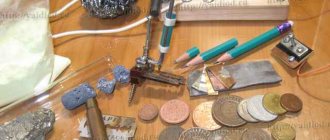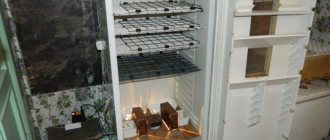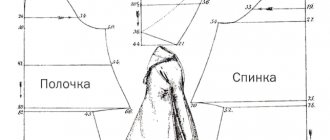One of the many machines, in the general sense of the word, is a photo relay. It is visually invisible, has little functionality and is used in many niches. The device has a single reaction to the external factor of the presence or absence of light - the connection or break of the line through which the current flows. The latter is used both directly to disconnect or activate consumers, and as a signal pulse. You can meet photo relays in many areas of life, from production control lines or subway turnstiles, to their presence as elements of various types of lighting switches.
Turnstiles in the metro:
Many people have more than once found themselves in situations where the location of objects cannot be seen in the dark. Moreover, this interferes not only with the process of personal movement, but also creates inconvenience when you need to find something in the dark. The issue can be completely resolved by installing a lamp. But the problem with turning it on in the dark immediately becomes apparent. Here, a photo relay can be used as an automatic machine, turning on the lighting precisely at those moments when darkness sets in.
The mentioned niche of use is not the only one. Based on the sensor’s response to visible radiation, both devices that count units of goods and security devices are built. Both of these types determine the intersection of a ray of light with an object. Systems for automatically opening doors, gates or barriers are made on the same principle.
The simplicity of the design makes it easy to make a complex from a reacting part and a photo relay with your own hands, which will be discussed in the article. Types of connections of ready-made assemblies produced by industry and their circuits will be considered, revealing the essence of these parts, from the most basic to those based on a microcontroller.
Scheme of a simple photo relay
Let's start with a simple device like a night light. When it is light, it is off, but the darker it gets, the brighter the lamp burns. Just a quick reminder - the device is powered by 220 V, so you need to be careful and attentive when assembling and checking it.
Night light diagram:
The lower the illumination of the photoresistor, the more open the seven-storage switch Q6004LT is. Accordingly, more current is supplied to the load, which is a low-power incandescent lamp.
There is a variant of the described scheme that already uses 5 elements. In it, the lamp simply lights up in the dark at maximum brightness and goes out when light hits the photoresistor.
A simple photo relay circuit:
The sensitivity is adjusted by selecting the value of R1. It needs to be changed in any direction within relatively small limits. The resistor power is chosen to be 1 W in all cases. The KU208G semisistor can be replaced with a KU601G without losing the functionality of the final device, but in any case, a heat sink must be installed on the said circuit element - when using the specified load, it gets very hot.
Another simple design is the use of a photo relay in conjunction with several transistors. The above diagram was initially designed to connect consumers through the opening line of the electromagnetic relay.
Transistor photo relay:
Photoresistor PR1 with trimmer R1 act as a voltage divider that controls the state of transistor VT1, which in turn opens or closes VT2. The latter passes current to relay K1, which opens or connects the load power line. Diode VD1 shunts current surges when the electromagnetic element is triggered, protecting the transistors.
Note! The specified device is no longer powered from a 220 V network, but has its own current input from 5 to 15 V. As for the functions of the R1 trimmer, it is needed to set the sensitivity to the flow of light, which leads to the operation of the device itself.
Where can I use a device with automatic light control?
A photo relay can be used to turn lights on or off at different times of the day. For example, when darkness sets in, the device turns on the lighting, and at dawn it turns off. It can also be used at the entrance of an apartment building or on your own country site.
There is widespread use of an LED lamp with a photo relay, which turns the lighting on and off in autonomous mode. Such a device can be used in a “smart home”. At the same time, using a photo relay you can not only control the lighting, but also open zhaluse.ru blinds or ventilate the room. It should be noted that this device can be installed for a home security system.
Repeatable industrial option
As a kind of standard, consider the FR-602 photo relay circuit from the EIK company. Most of the similar devices on the market are structurally similar, differing only in small details.
Appearance:
Schematic diagram of a photo relay along with a printed circuit board:
As you can see, the design is simple and can be done at home. Elementary base:
| Designation on the diagram | Model/type | Characteristics | Analogs |
| C2 | Capacitor | 0.7uF, 400V | |
| C4 | Electrolytic capacitor | 100 µF, 50 V | |
| C5 | 47 µF 25 V | ||
| R2 | Resistor | 1.5 MOhm, 0.125 W | |
| R3 | 220 Ohm, 2 W | ||
| R4 | 1 MOhm, 0.125 W | ||
| R5 | 560 kOhm, 0.125 W | ||
| R6 | 200 kOhm, 0.125 W | ||
| R7 | 100 kOhm, 0.125 W | ||
| R8 | 75 kOhm, 0.125 W | ||
| R9 | 33 kOhm, 0.125 W | ||
| W.L. | Construction resistor | 2.2 mOhm | |
| ZD1 | Zener diode 1N4749 | 24 V | 3 series-connected D814A, or 2 D814D |
| D1-D5 | Rectifier diode 1N4007 | ||
| VD1 | Rectifier diode 1N4148 | ||
| Q1, Q2 | Bipolar transistor BC857A | KT3107B | |
| PH | Photocell (photoresistor) | Up to 110 kOhm | |
| Rel | Relay SHA-24VDC-SA (Rel1) |
Parameters of transistors MP26 - MP42 | Master Vintik. Everything with your own hands!
| Device type | Structure | Pk max [mW] | fgr, f*h216 [MHz] | Ukbo max [V] | Uebo max [V] |
| MP26MP26AMP26B | pn-pp-n-pp-np | 200200200 | ≥0.2*≥0.2*≥0.5* | 707070 | 707070 |
| MP35 | npn | 150 | ≥0.5* | 15 | — |
Table continuation
| Device type | IK max I*K and max [mA ] | Ikbo [μA] | h21e | Cck [pF] |
| MP26MP26AMP26B | 300*300*400* | ≤75 (70V)≤75 (70V)≤75 (70V) | 13…25 (35V;1.5mA)20…50 (35V;1.5mA)30…80 (35V;1.5mA) | ≤15 (35V)≤15 (35V)≤15 (35V) |
| MP35 | 20 (150*) | 30 (5V) | 13…125 (5V;1mA) | — |
Table continuation
| Device type | rKenas [Ohm] | Ksh [dB] r*6 [Ohm] | τк [ps] t*pac [ns] t**off [ns] | note |
| MP26MP26AMP26B | ≤2.2≤2.2≤1.8 | ——— | ≤1500***≤1500***≤1500*** | |
| MP35 | — | ≤220* | — |
Parameters of transistors MP36, MP37
| Device type | Structure | Pk max [mW] | fgr, f*h216 [MHz] | Ukbo max [V] | Uebo max [V] |
| MP36A | npn | 150 | ≥1* | 15 | — |
| MP37AMP37B | np-nn-pn | 150150 | ≥1*≥1* | 3030 | —— |
Table continuation
| Device type | IK max I*K and max [mA ] | Ikbo [μA] | h21e | Cck C*12e [pF] |
| MP36A | 20 (150*) | ≤30 (5V) | 13…45 (5V;1mA) | — |
| MP37AMP37B | 20 (150*)20 (150*) | ≤30 (5V)≤30 (5V) | 15…30 (5V;1mA)25…50 (5V;1mA) | —— |
Table continuation
| Device type | rKENas [Ohm] r*BE us [Ohm] K**u. R. [dB] | Ksh [dB] r*6 [Ohm] | tk [ps] | note |
| MP36A | — | ≤10 (1kHz) | — | |
| MP37AMP37B | —— | ≤220*≤220* | —— |
MP38, MP39, MP40
| Device type | Structure | Pk max [mW] | fgr, f*h216 [MHz] | Ukbo max U*KER max [V] | Uebo max [V] |
| MP38MP38A | np-nn-pn | 150150 | ≥2*≥2* | 1515 | —— |
| MP39MP39B | pn-pp-np | 150150 | ≥0.5*≥0.5* | 15* (10k)15* (10k) | 55 |
| MP40MP40A | pn-pp-np | 150150 | ≥1*≥1* | 15* (10k)30* (10k) | 55 |
Table continuation
| Device type | IK max I*K and max [mA ] | Ikbo [μA] | h21e | Cck [pF] |
| MP38MP38A | 20 (150*)20 (150*) | ≤30 (5V)≤30 (5V) | 25…55 (5V;1mA)45…100 (5V;1mA) | —— |
| MP39MP39B | 20 (150*)20 (150*) | ≤15 (5V)≤15 (5V) | ≥12 (5V;1mA)20…60 (5V;1mA) | ≤50 (5V)≤50 (5V) |
| MP40MP40A | 20 (150*)20 (150*) | ≤15 (5V)≤15 (5V) | 20…40 (5V;1mA)20…40 (5V;1mA) | ≤50 (5V)≤50 (5V) |
Table continuation
| Device type | rKENAS[ Ohm ] | Ksh [dB] r*6 [Ohm] | tk [ps] | note |
| MP38MP38A | — | ≤220*≤220* | — | |
| MP39MP39B | — | -≤12 (1kHz) | — | |
| MP40MP40A | — | — | — |
Parameters of transistors MP41, MP42
| Device type | Structure | Pk max [mW] | fgr, f*h216 [MHz] | Ukbo max U*KER max [V] | Uebo max [V ] |
| MP41MP41A | pn-pp-np | 150150 | ≥1*≥1* | 15* (10k)15* (10k) | 55 |
| MP42MP42AMP42B | pn-pp-n-pp-np | 200200200 | ≥2*≥1.5*≥1* | 15* (3k)15* (3k)15* (3k) | ——— |
Table continuation
| Device type | IK max I*K and max [mA ] | Ikbo [μA] | h21e, h*21e | Cck C*12e [pF] |
| MP41MP41A | 20 (150*)20 (150*) | ≤15 (5V)≤15 (5V) | 30…60 (5V;1mA)50…100 (5V;1mA) | ≤50 (5V)≤50 (5V) |
| MP42MP42AMP42B | 150*150*150* | ——— | 20…35* (1V;10mA)30…50* (1V;10mA)458…100* (1V;10mA) | ——— |
Table continuation
| Device type | rKENAS[ Ohm ] | Ksh [dB] | τк [ps] t*pac [ns] t**off [ns] | note |
| MP41MP41A | —— | —— | —— | |
| MP42MP42AMP42B | ≤20≤20≤20 | ——— | ≤2000***≤1500***≤1000*** |
Pinout and dimensions of transistors MP26 - MP42
Popularity: 15,274 views.
Source: //www.MasterVintik.ru/parametry-tranzistorov-mp26-mp42/
Connection diagram of classic photo relays to the consumption line
All types of commercially produced or self-made relays require separate power. Accordingly, two contacts of the device will be intended for the named purposes. Moreover, there are photo relay models without a built-in voltage converter, which means that power is supplied to them not from a 220 V network, but through a separate step-down unit. There may be several lines going to consumers, depending on the number of internal electromagnetic switches. Moreover, the input can be separate for each contact, combined among others, or even integrated with the power supply of the photo relay itself.
The light sensor in most models is built into the body of the device itself, but there are also separate options that allow you to move it away from the device itself. The latter is necessary in cases where the photodetector is not illuminated by controlled lamps, so that the system does not turn into a strobe. That is, when it is dark, the device turns on the lamps. It becomes light - he turns them off. Again it triggers darkness. And so on in a circle.
Single
The previously described model FR-602 and similar ones are connected to the line as follows:
For a large number of energy consumers
To control a powerful load, for example, when connecting a spotlight or numerous lamps, it is better to use intermediate relays. In the role of the latter, appropriate devices are selected that can withstand the passage of a large current sufficient for power supply. An example would be RK-1p/2p (Un), MRP-2, IEK ORM-41F-1, DEKraft PR-102 and the like. Please note that some of the relays of a similar design are designed to control alternating current (AC), while others are designed to control direct current (DC). In addition, the switching voltage may differ to the lower side from the socket rating. The last two factors are important to consider when designing a wiring diagram. If the intermediary relay is powered by direct current, then the photo relay must control the supply of electricity to the conversion unit. Which, once turned on, will activate the electromagnetic contactor, activating the main power line of client devices.
Using other photo relay models
Here is a diagram for connecting a photo relay for another version of the finite state machine - with an external light sensitivity sensor and separate contact lines. Initially it was prepared for FR-7E, but is also suitable for similar models from other manufacturers.
Photo of FR-07E:
Please note that the presented photo relay and the one mentioned earlier differ in the housing, and in particular in the protection of the device from external factors. The FR-601/602 can be safely placed outdoors on the street, while the FR-7E requires the installation of an additional casing for a similar effect. But devices of a similar installation plan are produced with all the necessary fastenings in a standard electrical panel, including prepared mounting locations for the DIN rail.
High power devices
These include the FR-7 model. It has no protection against moisture, the power consumption is quite high, the contact clamps are open, and the trimmer located on the front panel is not protected. However, this device can operate in networks with a voltage of 220 V. A specialist can set the adjustment to 10 lux, since it is very difficult to achieve this on your own.
Expansion of functionality with the addition of a time relay
When planning to use a photo relay for street lighting with your own hands, you can slightly expand its functionality by adding a timer that turns off the light after a set time. The reason is simple - you don’t need to waste electricity running lamps all night when no one really needs them. For implementation purposes, you can use a shutdown relay, like IEK ORT-A2-AC230V, THC-B1 or similar.
Extended power supply circuit for street lighting:
Motion sensor and light sensor
Having finished disassembling the connection and connection of the photo relay for street lighting, we will move to the premises under the roof. A similar system can also be found here. In essence, other than the vastness of the space compared to the outer limits, there are no differences. At night, as on the street, nothing is visible indoors. And here we also need an illumination system to disperse the darkness during periods of darkness. But not every prudent owner is willing to pay extra money for electricity that is wasted senselessly most of the time. After all, the need for light, although it arises occasionally at night, does not last throughout its entire period. This is where the connection of several components will come to the rescue: a light and motion sensor. That is, the system itself will only work at night and precisely at the time when someone moves within the range of the sensors. At the moment both factors are determined, a command will be given to the lamp to turn on. The main thing is not to forget to set the photo relay to the current level of illumination of the space and the motion detector to the desired sensitivity.
Connection diagram of the motion detector and light sensor to the lamps:
A quick note regarding the motion detector. It must be either infrared or ultrasonic. The reason is simple - the optical one, while the light is off, will not “see” the movement of the object in the touch field, and therefore will not give a command to activate the lamps.
Microprocessor photo relay
Modern technologies have also affected photo relays. Devices based on microcontrollers are increasingly being used, which allow not only determining the presence of light flux, but also combining many other functions. Moreover, the expansion does not require significant changes in the hardware component; it is enough to modify the internal program.
A microcontroller is a small computer, initially focused on controlling devices depending on external factors and an algorithm. In addition, its capabilities are quite sufficient for joining a common digital network that unites groups of equipment of various types.
It is also worth mentioning industrial samples of photo relays equipped with a “smart” part. But their functionality is usually limited by the manufacturer. Therefore, it is better to consider another system. For example, Arduino. Its capabilities are quite sufficient to control the light, turn off the line day and night, send messages about the current mode in use or signal problems in the performance of the lamp.
On the hardware side, everything that does not directly relate to the control functions is assigned to additionally connected “shields” to the Arduino. In the above diagram, the latter will refer to the clock, the light sensor and the relay itself. The issue of sending the status to the final owner is resolved using the GSM communication module, which will send SMS about the current operating mode of the system.
The design concept is quite simple:
There is a note regarding the assembly shown. Please note that the relay module has external power supply. This is done in order to avoid current surges, since the shield takes a lot of electricity from the common line and can cause a voltage “dip” during switching. Separate power supply is also recommended for SIM800L (in the diagram above it is connected directly to the Arduino itself). Also, the GSM communication module is quite a consuming element - it needs to generate a certain power to connect to a cell tower, and it can only take energy for this purpose from the supply line.
As for the software part, anyone familiar with programming Arduino microcontrollers can write the appropriate algorithm. Moreover, there are many codes on the Internet.
Despite the functional simplicity of the photo relay, it has enough niches for application. Moreover, small capabilities are expanded by adding new ones due to slight complication of the circuit and the use of microcontrollers.
Operating principle
The diagram shows the principle of operation of the device. Photoresistor PR1 reduces its resistance to several Kohms as the illumination increases, due to which phototransistor VT2 opens, which turns on photorelay K1, and this device, in turn, will begin to transmit signals. Diode VD1 protects the circuit from self-induction. Thanks to this principle, even very weak signals can turn the light on or off.
Photo - Photo relay circuit
The main working part is a photocell, which is a gas tube in which gas ionization occurs. It has a cathode that is capable of producing electrons in proportion to the intensity of light directed towards it, and the tube is also equipped with an anode to collect electrons.
Photo – Photo relay
Whenever a negatively charged surface is placed in an atmosphere of an ionizable gas, such as mercury vapor or any inert gas, electrons are transferred to it. There, by using the Fermi-Dirac velocity theory, electrons are accelerated depending on the strength of the applied electric field.
Photo – Photo relay TDM
These electrons travel a relatively short distance before colliding with an ionizing gas atom. When an electron, which has constant kinetic energy, passes through an ionizing substance, it disturbs the atoms it encounters. Also, its trajectory of action may change periodically. If the material is gaseous, the resulting fragments or ions may move away from each other. But if electrons are knocked out of atoms, then they move in one direction, and the residual positive ions move in the opposite direction. The output of the ionization type or photocell depends on the number of electrons at the anode.
It is the movement of electrical particles in a certain sequence that causes the device to switch. It must be said that this is especially convenient for devices with a motion sensor Finder, Legrand.











